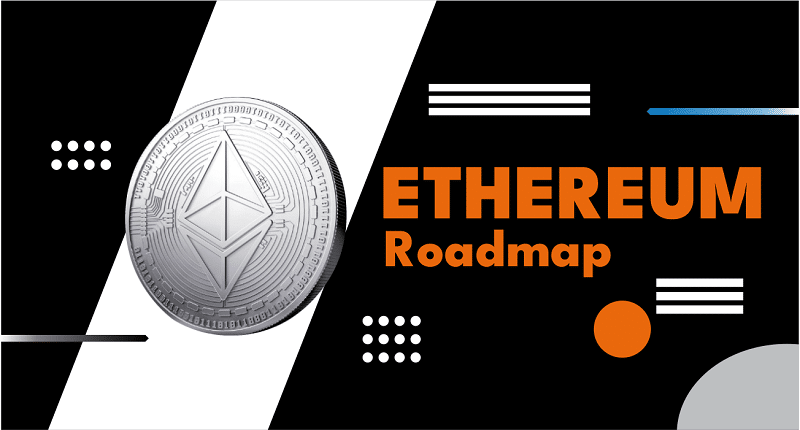The Ethereum network just took a giant leap forward with the successful Shapella hard fork! Think of it as the first major upgrade on a journey to transform Ethereum into the powerful, scalable platform we’ve all been waiting for. But what comes next? Let’s dive into the exciting roadmap that promises to turn Ethereum into a true “world computer” and the backbone of a decentralized crypto-economy.
What’s the Buzz After Shapella?
While Shapella was a crucial step, enabling the withdrawal of staked ETH, it’s just the beginning. Think of it as unlocking a new level in a video game, opening up access to even more powerful upgrades. The next big milestone on the horizon is the Cancun hard fork, expected in late 2023. This upgrade will bring with it a game-changing technology called Proto-Danksharding, implemented through EIP-4844. So, what exactly is Proto-Danksharding, and why should you care?
Proto-Danksharding: The Rollup Revolution
Imagine Ethereum as a busy highway. Currently, all transactions are processed on this main highway, leading to congestion and higher fees, especially during peak hours. Rollups are like building efficient express lanes alongside the main highway. They bundle up numerous transactions and process them off-chain before submitting a summary back to the main Ethereum chain. This significantly reduces the load on the main network and makes transactions much cheaper and faster.
Proto-Danksharding is designed to supercharge these rollups. Here’s how:
- Introducing “Data Blobs”: Proto-Danksharding introduces a new way for rollups to store data on the Ethereum network. These “data blobs” are like temporary storage units attached to blocks.
- Cost-Effective Data Storage: Unlike regular transaction data, these blobs are significantly cheaper for rollups to utilize.
- EVM Inaccessibility & Ephemeral Nature: Importantly, the Ethereum Virtual Machine (EVM), the brain of the Ethereum network, cannot directly access the data within these blobs. Furthermore, this data isn’t meant to be stored permanently; it’s automatically deleted after a set period.
The Bottom Line: Proto-Danksharding makes it significantly cheaper for rollups to operate, and these savings are passed down to you, the user, in the form of lower transaction fees! Think of it as finally getting rid of those hefty gas fees that sometimes make you think twice about making a transaction.
Beyond Proto-Danksharding: What Else is on the Horizon?
Ethereum’s scalability journey doesn’t stop with the Cancun upgrade. There are other exciting developments in the pipeline that will further enhance the network’s capabilities. Let’s take a look at two significant ones:
Distributed Validator Technology (DVT): Strengthening Decentralization
Ever considered staking your ETH to help secure the network but found the 32 ETH requirement and technical setup a bit daunting? Or maybe you’re concerned about the centralization risks associated with using large staking services? DVT aims to address these challenges.
Think of DVT as enabling secure and trustless “squad staking.” Instead of relying on a single entity to validate transactions, DVT allows groups of individuals to collectively operate a validator. This brings several benefits:
- Lower Barrier to Entry: You can pool your ETH with friends or trusted partners to reach the 32 ETH requirement.
- Enhanced Security & Resilience: If one validator node experiences issues, others in the group can continue to operate, ensuring network stability.
- Increased Decentralization: Reduces reliance on large, centralized staking providers.
Obol Labs is at the forefront of developing DVT solutions, with potential deployment as early as 2024. Imagine a future where staking is more accessible and decentralized than ever before!
Proposer-Builder Separation (PBS): Tackling MEV
Have you heard of MEV, or Maximal Extractable Value? It refers to the potential profit validators can extract by strategically ordering transactions within a block. While not inherently malicious, excessive MEV extraction can lead to network instability and unfair outcomes.
PBS aims to mitigate these issues by creating a clear division of labor in block construction:
- Proposers: Responsible for proposing the next block to be added to the chain.
- Builders: Specialized actors who construct the actual contents of the block, optimizing for efficiency and, hopefully, reducing MEV opportunities.
This separation of roles is expected to make MEV extraction less prevalent and create a more equitable environment for network participants. However, this is a more complex upgrade and is likely still a couple of years away.
Ethereum’s Price: A Quick Reality Check
While the long-term outlook for Ethereum and its technological advancements is undeniably positive, it’s important to remember that the crypto market can be volatile. As of today, Ethereum’s price has seen a dip, mirroring a broader market correction. While ETH has shown strong gains over the past month, such corrections are a normal part of the market cycle. It’s a reminder that while the technology is constantly evolving, market fluctuations are to be expected.
The Road Ahead: A Scalable and Decentralized Future
The journey towards a fully scalable Ethereum is well underway. The Shapella hard fork was a significant milestone, and the upcoming Cancun upgrade with Proto-Danksharding promises to be a game-changer for rollups and transaction costs. Coupled with advancements like DVT and PBS, Ethereum is steadily building towards a future where it can truly become the lightning-fast world computer and the foundation for a robust decentralized crypto-economy. It’s an exciting time to be involved in the Ethereum ecosystem, and these ongoing developments are paving the way for a more accessible, efficient, and decentralized future for all.
Disclaimer: The information provided is not trading advice, Bitcoinworld.co.in holds no liability for any investments made based on the information provided on this page. We strongly recommend independent research and/or consultation with a qualified professional before making any investment decisions.


